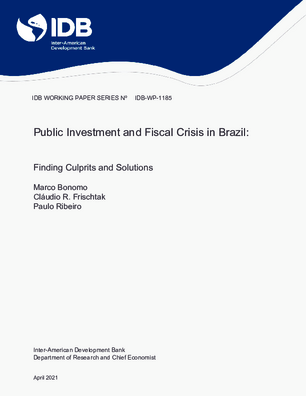Public Investment and Fiscal Crisis in Brazil: Finding Culprits and Solutions
Date
Apr 2021
We investigate the relation between existing fiscal rules and investments in the context of a fiscal crisis in Brazil. We analyze existing fiscal rules at national and subnational levels, their enforcement, and proposed alternatives. Using narrative analysis, case studies, interviews, empirical estimation, and model simulations, we conclude that public investment is not closely related to fiscal rules in Brazil but is mainly determined by fiscal conditions both at national and subnational (state) levels. It is the steady increase of personnel expenditures in real terms that underlies the fiscal deterioration of the last decade, despite the existence of fiscal rules devised to prevent it. We argue that a constitutional rule limiting subnationals personnel expenditures to 50 percent of net revenues, triggering adjustment measures when reaching 47.5 percent, would be an effective instrument for subnational fiscal management, opening fiscal space for increasing investments. At the national level, despite the existence of several fiscal rules, the only effective fiscal anchor is the primary expenditure ceiling introduced in 2016, which has successfully curbed expenditures, including those of the judiciary and legislature.




